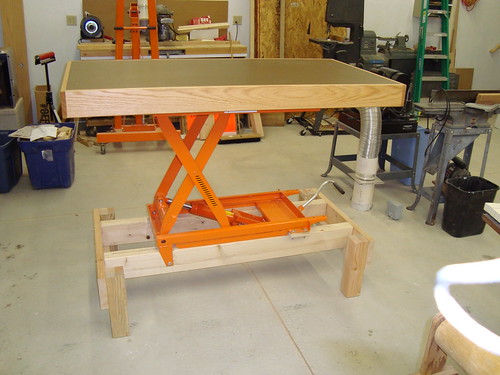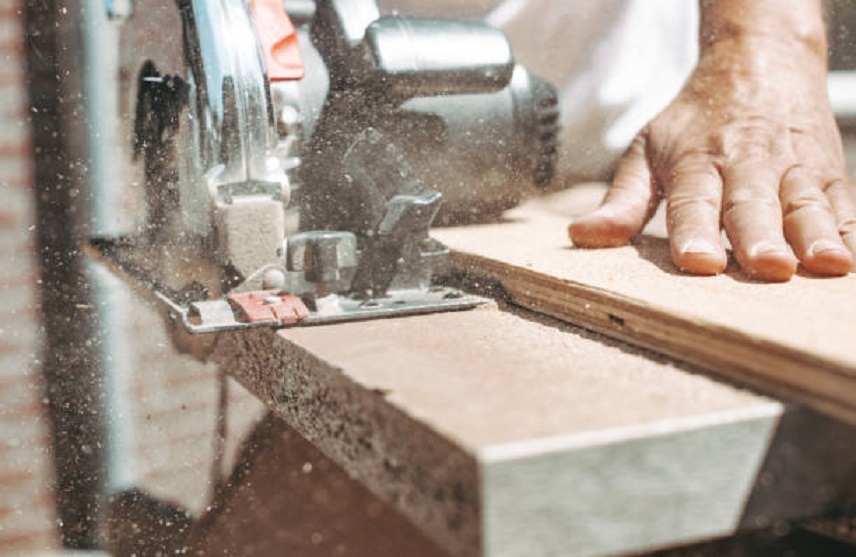No matter what project you might be working on, it will almost always end on your assembly table. With that in mind, what is the perfect woodworking assembly table size?
A woodworking assembly table with a size of at least 60″ by 30″ is recommended, but if you have more space to work with, then a 100″ by 50″ assembly table is ideal. A working height of anywhere from 20″ to 34″ will suit most projects.
What is a woodworking assembly table?
An assembly table is a type of mobile workbench designed to transport heavy parts and machinery through the workshop. It is usually equipped with locking casters which provide mobility but can also be locked when you need the assembly table to remain in one spot.
Woodworking Assembly Table Size
There are three key measurements that you need to keep in mind when it comes to having the perfect assembly table: length, width, and height.
Length and Width:
The ideal size for an assembly table would be around 60 by 30 inches, as it offers an excellent balance between usability and a compact size. Of course, this depends on the type of woodworking projects you usually carry out, but these measurements would be more than adequate for most.
If you have a large woodworking shop or are frequently working on projects with big, heavy sections, then a table of 100 by 50 inches would be ideal.
Height:
The ideal working height for most projects is between 20″ and 34″, depending on what you are working on. Having an assembly table with an adjustable height is crucial. You will have a lot more versatility, and you can save yourself a lot of pain in the long run.
To protect your back, and keep you up-close and personal with your project, you want your assembly table to be at the right height, and not be in an uncomfortable position for extended periods.
How to build a woodworking assembly table according to your size needs
If you’re in the woodworking game, then you probably have all of the skills that you need to put a decent assembly table together yourself. The main benefit of a custom build, of course, is that you can design it according to your needs.

There are many plans that you can find online, if you want to have detailed instructions and a pre-determined design, but you can also take a more customized and personal approach to construction.
No matter how you’re putting your table together, there are a few key things that you will need to keep in mind.
- Choose the right materials. Every woodworker knows that material is everything. You don’t want your table warping over time, or splitting under pressure. MDF and plywood are much more stable for your work surface than solid wood, but a solid wood frame will be sturdier and more durable.
- Start with your top piece. Measure out the table size that you need carefully (30″X60″ for smaller shops or 50″X100″ for a larger room). You will also have to decide on the grooves, dog holes, and slots that you want in the work surface.
- Built-in storage. Having drawers and/or cupboard space built into your assembly table can make all of the difference when you are looking for different parts and equipment in the middle of a complex project.
- Ensure you have a sturdy base. You will need strong legs for an assembly table, and the lower base of the table should be smaller than your work surface. You want to have an overhang on your top piece so that you can easily attach clamps and other tools.
- Include a lift system. The ability to adjust the height of your table is extremely valuable during assembly. You can easily have height-adjustable legs on the table, or you can include a lift system on the work surface.
Are Assembly Tables and Outfeed Tables the same thing?
You might have heard both of these terms, and wondered whether an assembly table is the same thing as an outfeed table. Ultimately, the answer is that they can be, and these terms are often used to describe essentially the same piece of furniture.
An outfeed table is simply the table where your cut pieces of wood end up, and it is often placed adjacent to whichever tool it is catching wood from. An outfeed table, therefore, can also be used as an assembly table (where you are fitting, attaching, gluing, and clamping your project).
They are not always the same thing, however, as some workshops will have an assembly table that is separate from the surface where the wood is collected after being cut.
Assembly Table vs. Workbench for Woodworking
You might also have wondered whether you really need an assembly table at all. Can’t you just use a workbench to perform the task of an assembly table? Well, you will probably find that a workbench is just not quite cut out for assembling most woodworking projects.
A workbench is a relatively simple surface, and while you might be able to make do in a pinch, it is not specialized to handle the tasks of an assembly table. A proper assembly table will have an adaptable surface with dog holes, grooves, and slots that allow you to attach the equipment that you need – like clamps and gauges – and it will preferably be height-adjustable for more versatility than a standard workbench. Not to mention assembly tables can also be moved around.
You want to have both in a fully functioning workshop. Your workbench is great for resting things on and quick, simple jobs, but your assembly table is what you will use for the majority of your work or if you need something mobile.
Summary & closing words
So, what is the perfect woodworking assembly table size? Well, it depends on the size of your workshop, and the projects that you’re planning on assembling.
For a smaller space and most projects, a woodworking table of a size of 30″ X 60″ will be sufficient. 50″ X 100″ gives you a lot more utility – if you have the space for it. You also want to ensure that your assembly table is the right height. Between 20″ and 34″ is the best assembly table height for most people. An adjustable-height assembly table is always going to be more versatile.
At the end of the day, the perfect woodworking assembly table is the one that is right for you, and custom-building your own table can be the perfect project with which to christen your new shop.
